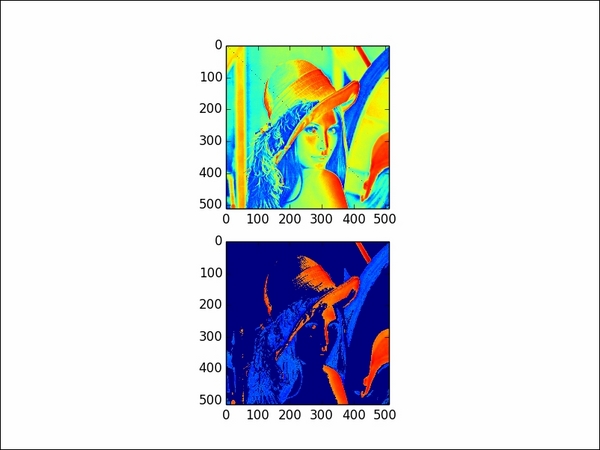Boolean indexing is indexing based on a boolean array and falls under the category of fancy indexing.
We will apply this indexing technique to an image:
Image with dots on the diagonal.
This is in some way similar to the Fancy indexing recipe in this chapter. This time, we select modulo
4points on the diagonal of the image:def get_indices(size): arr = np.arange(size) return arr % 4 == 0
Then we just apply this selection and plot the points:
lena1 = lena.copy() xindices = get_indices(lena.shape[0]) yindices = get_indices(lena.shape[1]) lena1[xindices, yindices] = 0 plt.subplot(211) plt.imshow(lena1)
Select the array values between quarter and three quarters of the maximum value, and set them to
0:lena2[(lena > lena.max()/4) & (lena < 3 * lena.max()/4)] = 0
The plot with the two new images will look like what is shown in the following screenshot:

Here is the complete code for this recipe from the
boolean_indexing.pyfile in this book's code bundle...



